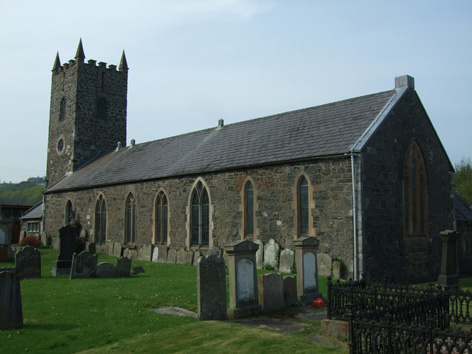
St Cedma’s Church, Inver
An ancient place of worship
St Cedma’s Church is one of the oldest places of worship in continuous use in East Antrim. It stands on an ancient ecclesiastical site, possibly dating back 1,500 years. It is believed that there was once a monastery at Inver and that the site of St Cedma’s marks the location of its chapel. Part of the churchyard wall is believed to date from this period.
Franciscan friary
The Church of St Cedma of ‘Ynver’ is listed in the papal taxation of 1306. But in the late medieval period a Franciscan Third Order Regular community was established at Inver. It seems that the Franciscans took over the site of St Cedma’s and reused the church building. In 1605 the lands belonging to the religious house at Inver were granted to James Hamilton, later Lord Clandeboy, and afterwards came into the possession of Sir Arthur Chichester.
Church of Ireland church
The visitation of 1622 recorded that St Cedma’s had been partially repaired. During the 1641 Rebellion, the parish church was used as a place of refuge by members of the local settler community. In 1657, an inquiry by the Cromwellians noted that the church was in repair. At this time, under Rev. Thomas Hall, the church was being used as a Presbyterian place of worship. However, with the restoration of both the monarchy and episcopalianism in 1660, Hall was expelled and the Dean of Connor became responsible for the church.
The church building
It is not clear when the core of the present St Cedma’s church was built, although it may have been around 1350. The church consists of a structurally undivided nave and chancel with a west tower. The main body of the church measures 27.5 metres feet by 9 metres externally and is built of split-stone rubble (identified as Ballygalley stone) with pinnings.
The church has been extensively remodelled over the years. In its north wall is a narrow window known as the “Leper’s Squint”. This name derives from the commonly held tradition that lepers were kept out of the church and would listen to the service from this spot outside. Above this window is a stone carved in the shape of a human head, believed to represent St Cedma.
In the south wall are seven pointed windows of varying heights and widths, and what appears to be an old door heading, perhaps a former entrance to a crypt under the church. At the west end of the church is a square tower with no spire. Its date is something of a mystery, although an arch built into its west wide has on it the year 1788.
The church interior
Early nineteenth century renovations robbed the interior of its Jacobean architecture and high oak-canopied pews. That said, the interior of the church today is one of the finest in County Antrim, with an impressive number of high quality stained glass windows. Two exceptional stained glass windows in the south wall of the nave are by Miss Wilhelmina Geddes.
Other notable interior features include the ceiling of the chancel, which is divided into 32 panels, each showing an ecclesiastical device, including a symbol for each of the twelve apostles. The dado on the east chancel wall is made of encaustic tiles. An old black marble font set into this wall is believed to date from the middle of the seventeenth century.
The churchyard
For centuries this churchyard was the principal burial place in Larne, used by all denominations, so it is full of interesting memorials. Headstones predominate, though there are some recumbent slabs and obelisks. One of the most interesting features of the churchyard is the lych-gate, the purpose of which was to provide a dry place for a coffin to rest on the way to the church.
Stories from the stones
There is a fair range of gravestones in this churchyard, each of which communicates something of both those commemorated and the person or persons who erected it. The earliest gravestone, based on the date of decease, commemorates James Murdoch who died on 23 Feb. 1677. Another late seventeenth-century memorial bears the year 1694 and commemorates Hugh Porter ‘marchant of Learne’ and his wife Katrin Wilson.

